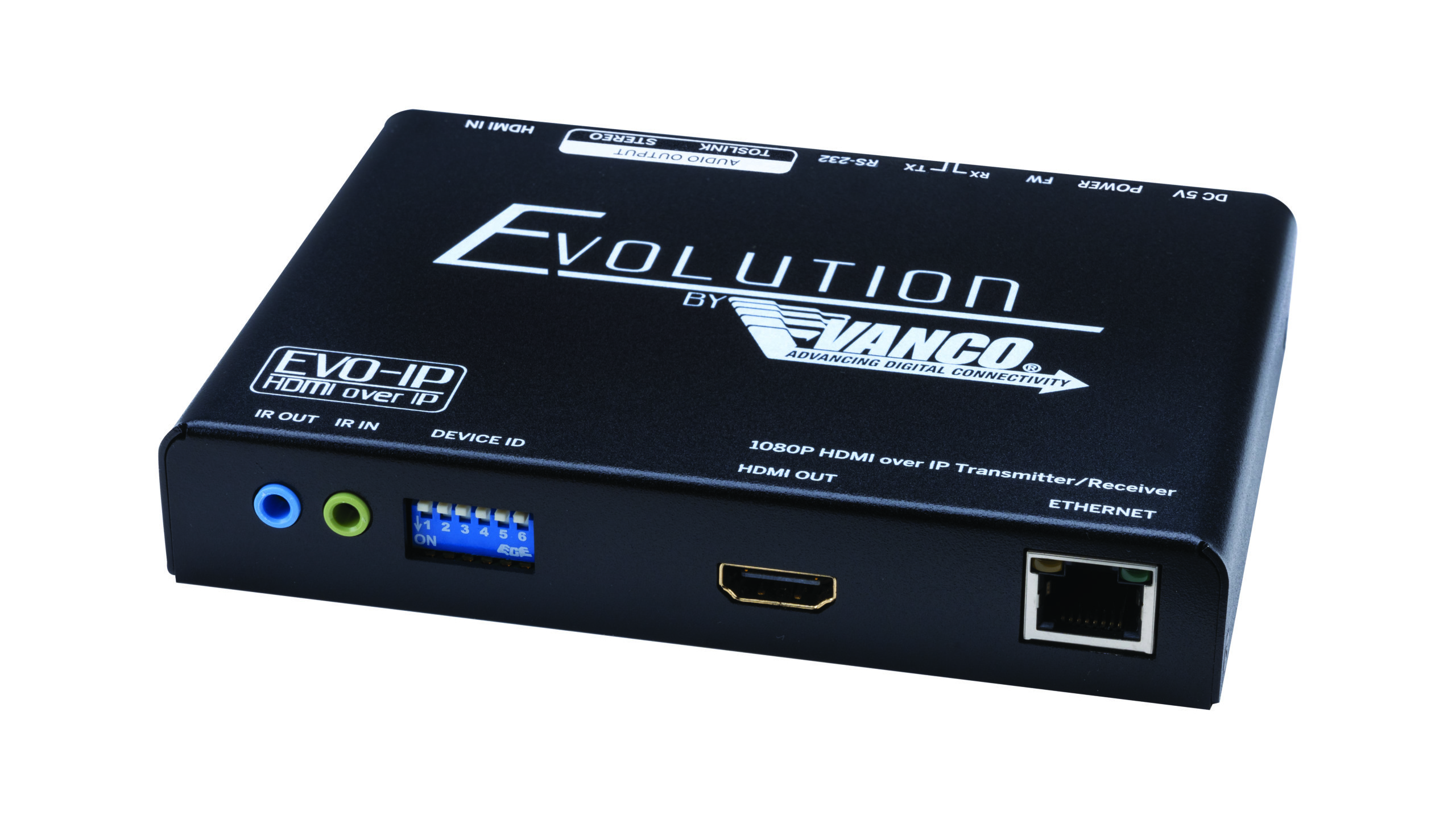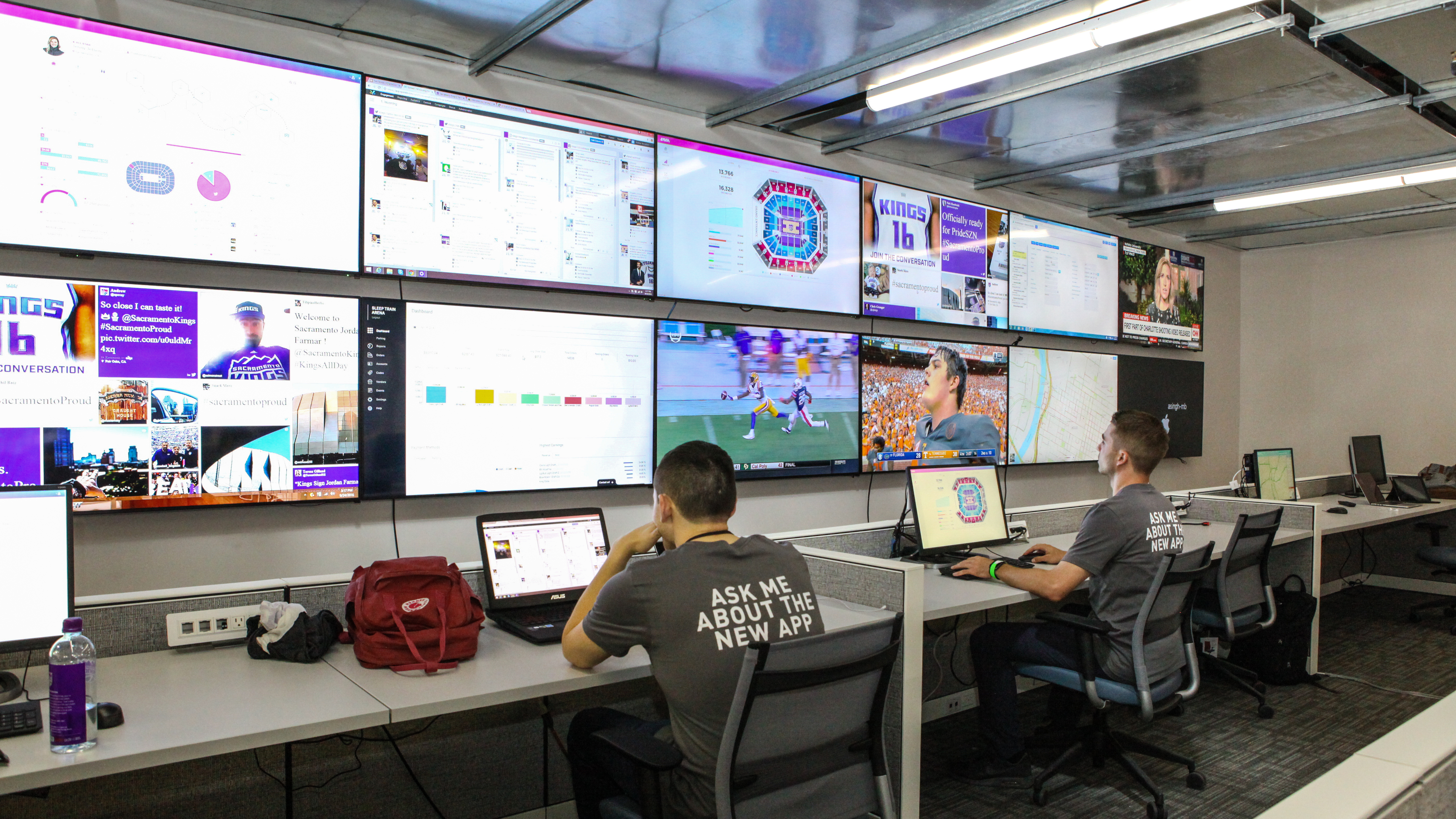Whether it’s security camera feeds, videoconferences, or an all-hands meeting, real-time video is increasingly going over IP networks, both local (LAN) and wide area (WAN). Sending audio and video signals over IP (AV over IP) promises to save time and enhance scalability, but it also presents immediate challenges, such as ensuring quality of service (QoS). AV providers must ensure minimal latency so that packet loss or jitter does not distract from the overall video experience.
Video is bandwidth-heavy, but the ratio of quality to bandwidth consumed and video flow control are improving. AV over IP encoder/decoder ports saw a 130 percent growth in sales last year, according to Futuresource Consulting, the UK-based analysis firm. In stadiums, government halls, worship facilities, and universities, where real-time video is desired but low latency is essential, integrators have more options from which to choose.
A New Year, A New Program
Clint Hoffman, CEO of Kramer USA, sees growing interest in real-time video over IP systems—and AV over IP in general—and thinks 2019 will be a banner year of sorts. “We’re seeing AV over IP being used in many applications instead of traditional matrix routing and traditional proprietary signal highways like HDMI and HDBaseT.”
Instead of bringing in a fixed matrix, and then laying in dedicated signal highways that are AV-proprietary, both tech managers and integrators see the benefit of routing virtually, creating a virtual matrix using AV over IP.
“We certainly are seeing an uptick in stadiums—we have a tremendous application at a stadium in Sweden,” Hoffman added.
Kramer has 136 decoders as part of a sophisticated AV over IP system in a U.S. casino. Hoffman also sees real-time video on the rise in colleges and universities.
Mark D’Addio, senior vice president of sales and marketing at VITEC, also sees stadiums as an ideal fit for real-time video over IP, where low latency is expected and high quality is needed. “They [stadium operators] don’t want to have a lot of delay, especially at screens where you can see the action from a luxury suite.”
AV over IP enables powerful digital signage upgrade at Lucas Oil Stadium

Flexibility
Michael Brandes, QSC’s product manager for Q-SYS video, agrees that IP-based video provides an enhanced level of flexibility. “I think the flexibility that network video provides—what we call right-sized matrices, where you’re not bound by symmetrical views—will catalyze growth in this space.”
The basics of AV over IP infrastructure
He explained that, with networked video, you can create a 5-input-by-200-output matrix more affordably than you could in the days of fixed point-to-point video. Also, the AVoIP paradigm is no longer considered bleeding edge. “Customers are at the point now where they’re using enough networked controls, systems, and networked audio systems—certainly in QSC’s case—where the aversion to networking has diminished,” he added.
Indeed, the industry has embraced convergence for a long time, but in reality, convergence is a continuum. “We’ve moved to digital video signals, but that’s not convergence,” Brandes said. “We’ve put TCP socket connections on projectors so that we can monitor them, but that’s not really convergence, either,” he argued.
But now we have manufacturers like QSC, who make products that work and meet AV needs, including new video products for the meeting room that will be unveiled this month.
What’s the status of the AV over IP transition?
Still 1080p, But 4K Over IP Is Coming Quickly
While many of today’s customers are still looking at 1080p HD over IP, just as many are building the infrastructure to support 4K over IP down the road. It is a future-proofing measure that makes sense.
“We already have 4K encoders and decoders,” said D’Addio. VITEC’s MGW Ace Decoder is a high-performance IP decoding appliance that supports the latest bandwidth-efficient HEVC/H.265 and H.264/AVC compression standards, and it will be upgradable to 4K. “HEVC and 4K go hand in hand for a lot of customers. It is true that when you move to 4K video, you’re increasing the bandwidth, so whatever you can do to minimize or to optimize the stream is great. With VITEC’s HEVC technology, which we’re scaling up to 4K, this is a big deal. You can have a really nice stream in 4K that may be only 15 or even 10 megabits per second.”
Government applications continues to drive real-time video over IP. From local government to the military to the U.S. House of Representatives, where VITEC has products, real-time streaming can serve video around a building, so people can watch video on a desktop using a browser, or they can view video on endpoint set-top boxes connected to TVs. Some users stream via government satellites.

Extending to Mobile
With AVoIP, managers can stream to mobile devices in addition to delivering feeds to installed screens on-site. Some systems with browser-based players offer multiviewer modes, in which users can explore different camera feeds during a live event or live sports game. Bonuses like this help to enhance the fan or visitor experience.
Additional Functionality
Brandon White, director of new product development at Vanco, explained that another benefit of IP-based video systems is increased functionality. “We’re incorporating other types of features within the product—not just static audio and video, but also video walls and on-screen display messages and images you can use for digital signage,” White said. For example, the Vanco EVO-IP system on-stream messages can overlay the video, a helpful feature within educational and commercial applications.
With new stadiums, next-generation AVoIP solutions make sense; end users will need to invest in the proper infrastructure and wiring to support high-level AV. But what about renovations? Real-time video over IP is tricky if the renovated facility doesn’t have the right infrastructure in place, if they don’t have the proper network cable, or if they still have RF cable around their stadium or venue. Graduating from RF to IP can be cumbersome and expensive. It can be good opportunity for a savvy integrator, though, to discuss the benefits of IP-based video, since latency is no longer a deal-breaker.

IT Skills Gap?
Another challenge that remains in this new era of AVoIP is the need for IT acumen within an AV integration firm. As Kramer’s Hoffman sees it: “You have to have people with IT skillsets and IT talent on your team.” To that end, Kramer, other vendors, and AVIXA offer AVoIP training courses and certifications.
Content security is incredibly important for all AV stakeholders, which is why VITEC “implements AES encryption, 256-bit,” said D’Addio. “And this is something, as far as protecting content, that end-users are managing. Businesses will often have relationships with Comcast or with the TV provider, for example. We have several different options for protecting content, and we support end-to-end services with AES encryption and decryption—any type of stream.”
The key, D’Addio added, is that that while fully featured, a system has to be secure and “very simple to use.”
For integrators who want to learn more about risks in networked AV systems and how to develop risk mitigation management plans, explore AVIXA’s Recommended Practices for Security in Networked AV Systems.
Leveling Up on IT
Various vendors offer certification and training programs for industry professionals who wish to invest in their AV over IP and IT networking skills.
Matrox Knowledge Net Training Sessions
